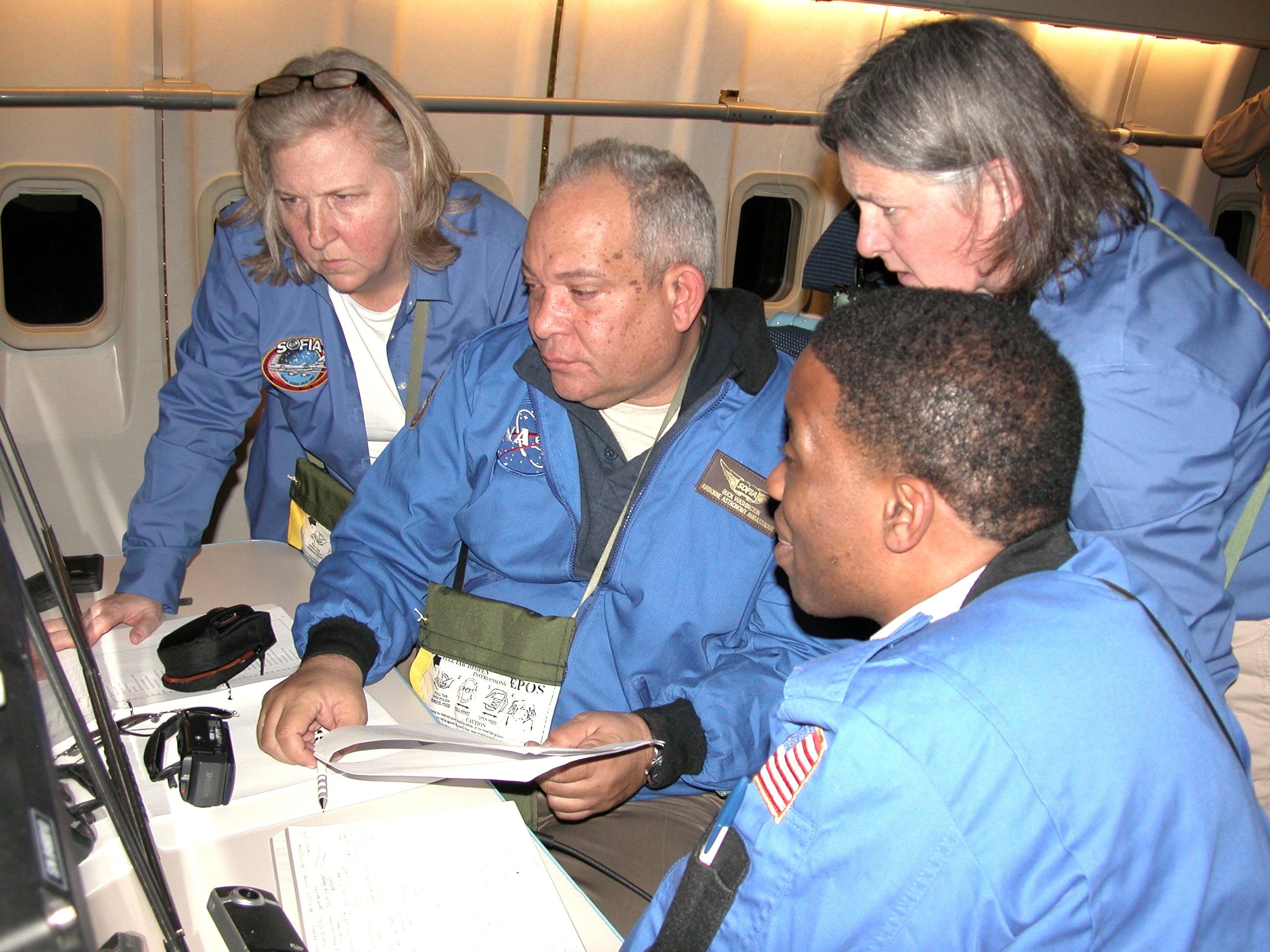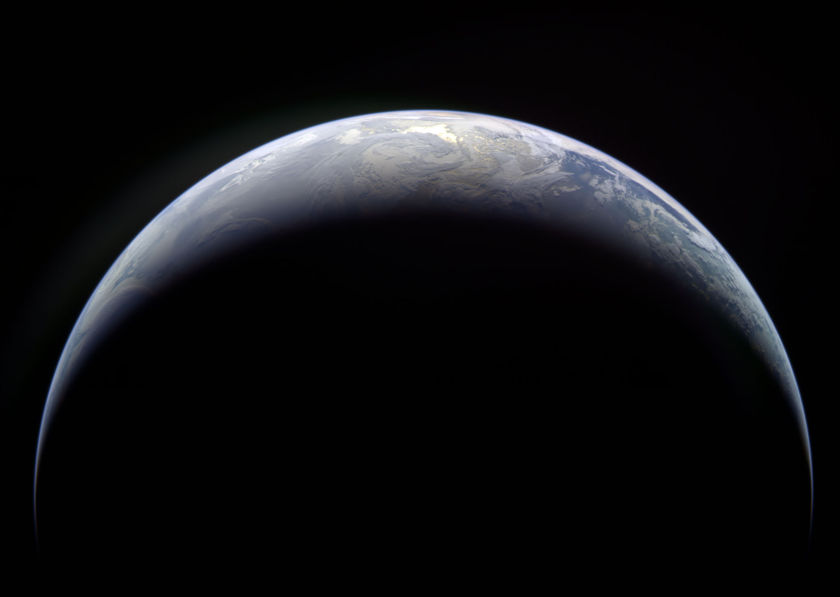
Meridiani Planum is south of Mars’ equator in the western part of an area called Terra Meridiani. The Opportunity Rover, part of NASA’s Mars Exploration Rover program, landed on Mars in January, 2004 and is currently exploring the plains of the Meridiani Planum. SETI Institute scientist Lori Fenton was featured on the podcast WeMartians to discuss the wind-formed dunes of Mars, ripples, and TARs (semi-permanent features called Transverse Aeolian Ridges).
- WeMartians: The Four Winds of Mars
 Airborne Astronomy Ambassador Nominated for National Award
Airborne Astronomy Ambassador Nominated for National AwardScience teacher Ravinder Athwal has been nominated for the National Lifechanger of the Year award. Athwal teaches at Bowman Continuation High School, is part of the SETI Institute’s Airborne Astronomy Ambassador (AAA) program, and is known for his commitment to his students and their academic success.
The AAA program prepares participants through webinars, workshops, and online learning modules for flights onboard NASA’s Stratospheric Observatory for Infrared Astronomy (SOFIA) The SOFIA flight week is an immersive STEM (Science, Technology, Engineering, and Mathematics) experience at NASA’s research facility in Palmdale, California. Following training and flight week, the AAA teachers implement related science curricula. The AAA evaluators measure enhancement of student learning and STEM engagement resulting from this new science curriculum that emphasizes real-world science.
- The Signal: Bowman Science Teacher Nominated for National Award
- SETI.org: SETI Institute Announces 2017 and 2018 Educators for the Airborne Astronomy Ambassadors Program Aboard NASA’s SOFIA Flying Observatory
 SETI: Past, Present and Future
SETI: Past, Present and FutureThe Planetary Society took a broad-ranging dive into the origins of SETI research, including the work of pioneers such as the SETI Institute’s Frank Drake and Jill Tarter, progress that has been made, including the Allen Telescope Array, other players in the field, and the future, including Laser SETI.
- The Planetary Society: Is There Anybody Out There?
 Kepler
KeplerThe Kepler survey mission catalog was released last June with SETI Institute scientist Susan Thompson as the lead author of the study. Thanks to Kepler, we understand that exoplanets, planets orbiting a star other than Earth’s Sun, are not a rarity. When the catalog was released, Kepler had identified 4,034 planet candidates and 2,335 had been confirmed.
Analysis of the Kepler data indicates that there may be 20 new exoplanets with the possibility of hosting life.
According to the researchers led by Susan Thompson from the SETI Institute in California, the 20 new planets are almost the same size as Earth and are orbiting Sun-like stars on similar orbits to our own. (Edgy Labs)
One of these new planets, KOI-7923.01 is about 97% the size of Earth and orbits its sun in 395 Earth days. According to SETI Institute scientist Jeff Coughlin, Director of the K2 Science Office, “If you had to choose one to send a spacecraft to, it’s not a bad option.” (New Scientist)
- Edgy Labs: Again, Kepler Finds New Habitable Planets Hiding in Plain Sight
- InHabitat: Kepler Data Reveals 20 Potential Habitable Worlds
- Independent: NASA Finds 20 Potentially Habitable Worlds ‘Hiding in Plain Sight’
- New Zealand Herald: NASA Finds 20 Habitable Worlds ‘Hiding in Plain Sight’
- Jordan Times: Search for Life: Kepler’s Final Survey Reveals 50 ‘Goldilocks’ Planets
 Frank Drake and the Golden Record
Frank Drake and the Golden RecordThis year marked the 40th anniversary of the launch of the Voyager space probes carrying along their Golden Records. With an original mission to explore Jupiter, Saturn, Uranus and Neptune, today Voyager 1 and Voyager 2 remain active and are heading into interstellar space. Part of their cargo is the Golden Record, a gold-plated copper disc that includes music, natural sounds, human greetings, images and printed messages intended to represent the diversity of humanity and human culture.
Frank Drake, Chairman Emeritus of the SETI Institute Board of Trustees and creator of the Drake Equation, was a member of the committee that determined what to include on the Golden record, a committee that also included Carl Sagan.
Both Frank Drake and Carl Sagan are also alumni of Cornell University. Cornell celebrated with a panel discussion, which included Frank, entitled “40 Years of Cosmic Discovery: Celebrating the Voyager Missions and Humanity’s Message to Space.”
“We all had the sense that we were doing something very important. We would create a record of the existence of … our civilization that would last longer than the Earth itself. It might never be found, but if it was, it would be the only thing in the universe that would [have recorded] memories of the history of this civilization,” Drake said. “And that weighed heavily on us, but inspired us.” (Cornell Chronicle)
- Cornell Chronicle: Cornellians Celebrate the Voyagers’ Historic Golden Record
SETI Institute is a world-class center of scientific research. But that’s not all we do. In addition to the Carl Sagan Center for Research, our Center for Education and Center for Outreach work to share knowledge and learning with all humanity. The Center for Education promotes STEM education that teaches and excites children, young adults and educators, while the Center for Outreach engages with the general public through a variety of digital, print and in-person initiatives. This newly expanded activity report covers all the work of the SETI Institute to provide a more holistic overview of the impact of our efforts.
You can download the whole October 2017 activity report here.
 Big Picture Science
Big Picture ScienceLast week Venom Diagram looked at how one animal’s poison is another’s cure. This week’s DNA: Nature’s Hard Drive looks at the potential for biotech and tools such as CRISPR.
Last week Seth Shostak talked with SETI Institute scientists Matija Cuk, Michael Busch and Matt Tiscareno to discuss interstellar comets.
All past Facebook Live videos can be seen on the SETI Institute’s Facebook page at https://www.facebook.com/SETIInstitute/.
- SETI Talks: November 29, Menlo Park, CA Featuring Jeff Coughlin and Geert Berentsen, and a discussion of the Kepler and K2 missions.
- Astronomical Society of the Pacific: December 5-8, St. Louis, MO Pamela Harman will speak.
- American Geophysical Union: December 11-15, New Orleans, Louisiana. SETI Institute Scientist Matt Tiscareno will present research on the rings of Saturn and the Cassini mission. Other SETI Institute scientists participating include Nathalie Cabrol, Franck Marchis, and Pamela Harman.
- American Astronomical Society: January 8-12, Washington, DC. SETI Institute scientists and staff will participate.
- Consumer Electronics Show: January 9-12, Las Vegas, NV Franck Marchis will participate





